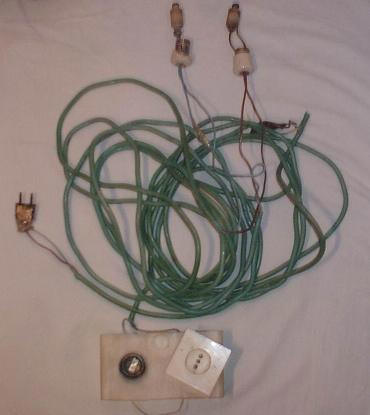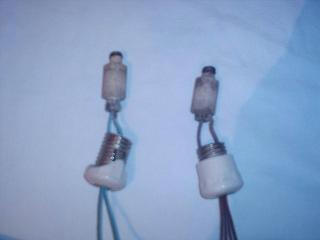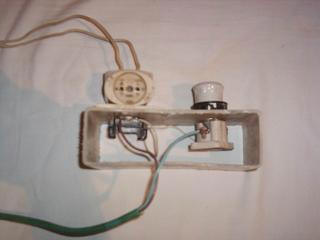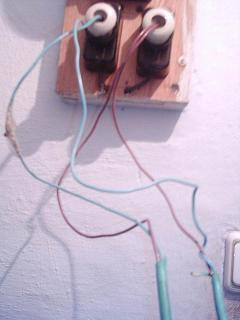§ 12 Ways to change the power circuit of the meter.
So, let's take a look at several ways that are offered, so to speak, for free.
My comments will be shown in italics.
Garland
The switching circuit of the counter is changed so that it is not connected to the supply line, but to the fuse blocks. The phasing of the counter remains standard, so checking by the indicator will show that the phase and zero are in place. Scheme of the garland, consists of two burnt fuses with soldered wires of the required length, pads with a fuse for protection against short circuits, plugs and sockets. The plug is included in any outlet in the house with the correct polarity, after which all the sockets in the house become "left", as their power is passed by the meter. In the outlet, garlands include a load, and the counter starts to rotate in the opposite direction. The more this load, the faster the counter is rewound. To restore the account, it is enough to unscrew the fuses with which a garland is connected and screw the usual ones. Garland coiled and hidden until the next time. (There are two nuances in the process: first, the counter should stand in the house, which is possible only in the countryside and very rarely in the city, and secondly, throwing garlands around the apartment.) Personally, even when I vacuum the house, the household for 10 Minutes of cleaning, zapnut about it 15 times .. To be torn off this garland - this is for sure)
I do not cite the scheme here, because even I, a professional electrician, had to look at it for a long time to understand, but the essence is simple: jumper cables made of plugs are put instead of native plugs, and power is supplied from them. That is, the power is taken to the counter. But especially I was touched by photos.
I would call them "the electrician's nightmare", or "tomorrow we will burn everything together", "the story of how I was fucked up by electricity." And these people are advised to do something with the home electrical wiring!
Pay attention to the fork on the left, it is either broken, or wrapped with tape (tape is known to be deficient), Or on it there is no half. In short, it will not be easy to stick it. The wire is torn and solid, most likely aluminum, obvious signs of mass twists.
Variations on the topic "Such do not take into cosmonauts". The likelihood that a guy who will screw the left plug will shock if not 100%, then something very close to that. Explicit signs of non-insulated live parts (although on the other hand, so it should be!)
Since the last fork was broken and went to use on the picture from above, here already the wires are stuck directly into the socket. And maybe I'm certainly not right (it's hard to see), but in my opinion only one wire fits to the fuse, and to the outlet 2, that is, it will be difficult to burn it, and wiring is easy ...
Confirmation of Scotch tape theory. The blue wire on the left is obviously wrapped in scotch tape. Although on the other hand, they could not wrap it up at all, but they shook it all the same! Well done!
Although at the end of the method everyone wrote relatively honest:
Characteristics.
The circuit is designed for induction counters.
Earthing is not necessary, the meter is switched on in accordance with standard phasing. The counter and fuses must be located inside the house.
The included "garland" is clearly visible, so it can only be used with closed doors.
Sockets in the house are not protected from short circuits.
(The probability of a fire is extremely high.) For safety reasons, it is recommended first to plug the plug into the outlet, then screw the fuse to zero, then the second fuse into the phase.
Disconnect- in the reverse order (with the fuses on, the plug is live).
(The likelihood of testing yourself for resistance to 220 V is also extremely high)
Conclusion: very, I repeat a very dangerous and ambiguous undertaking, help better the starving children of Africa, and this throw away.
The positive thing is that, under normal performance, it will still work.






Comments
When commenting on, remember that the content and tone of your message can hurt the feelings of real people, show respect and tolerance to your interlocutors even if you do not share their opinion, your behavior in the conditions of freedom of expression and anonymity provided by the Internet, changes Not only virtual, but also the real world. All comments are hidden from the index, spam is controlled.